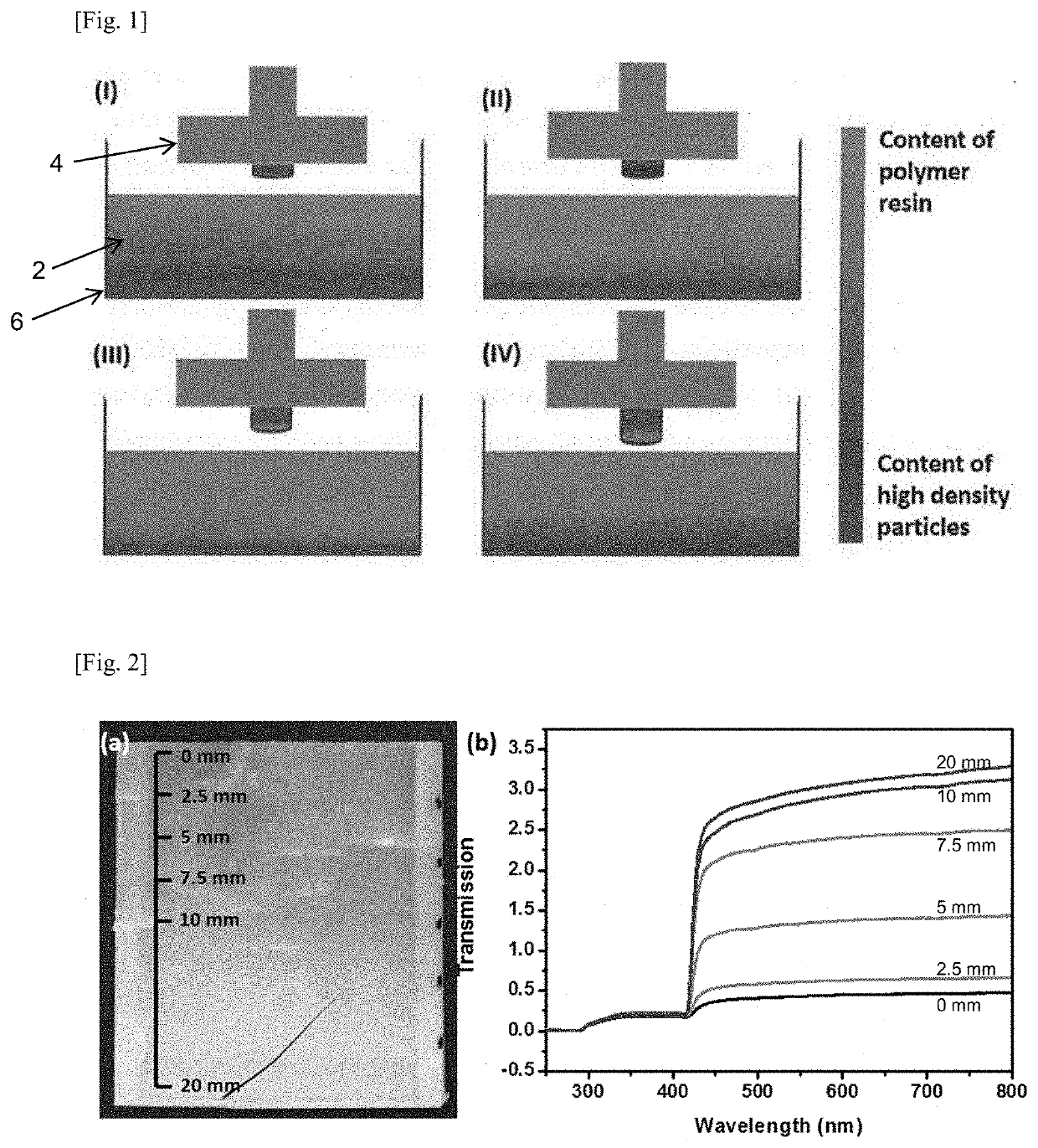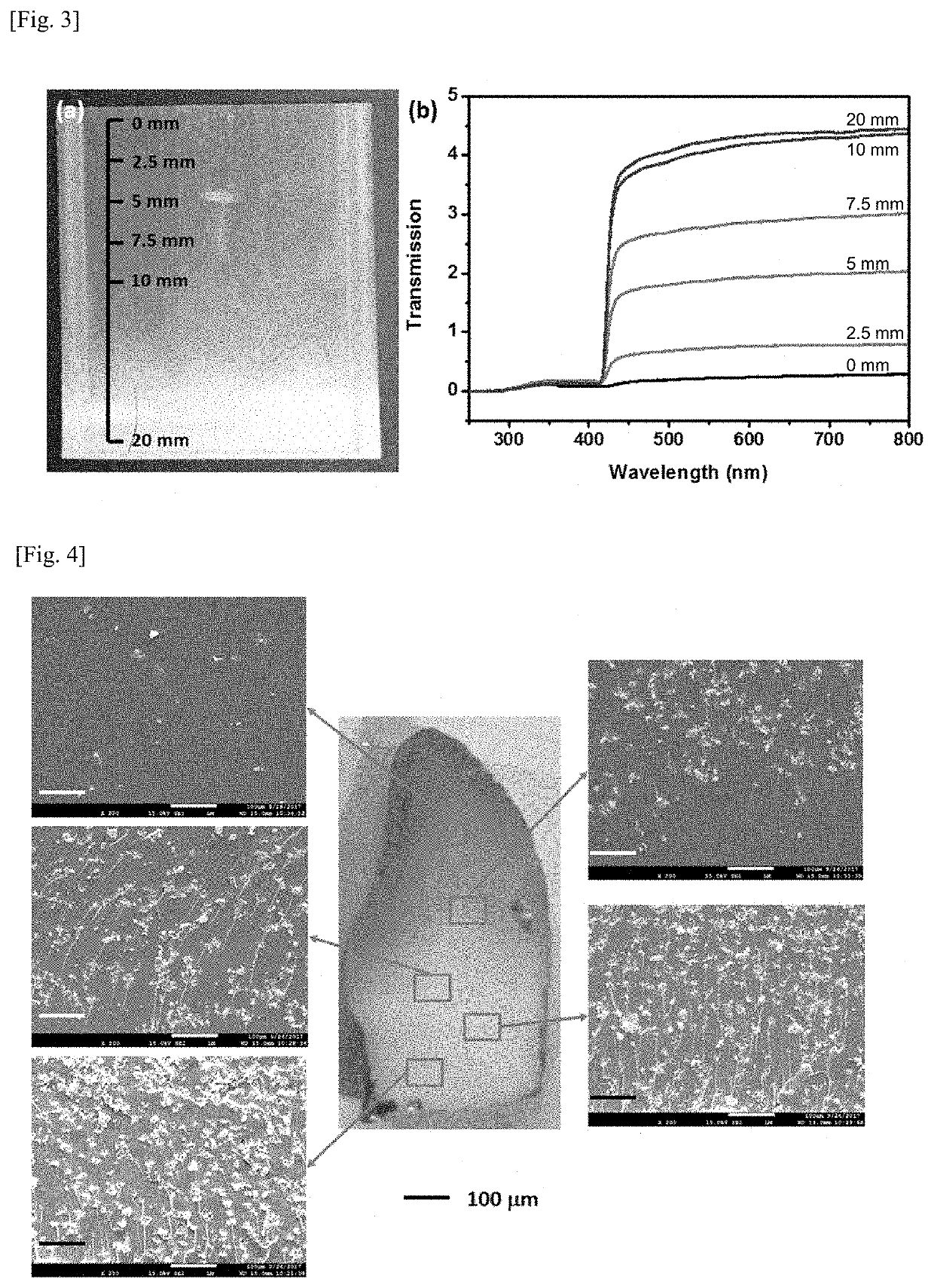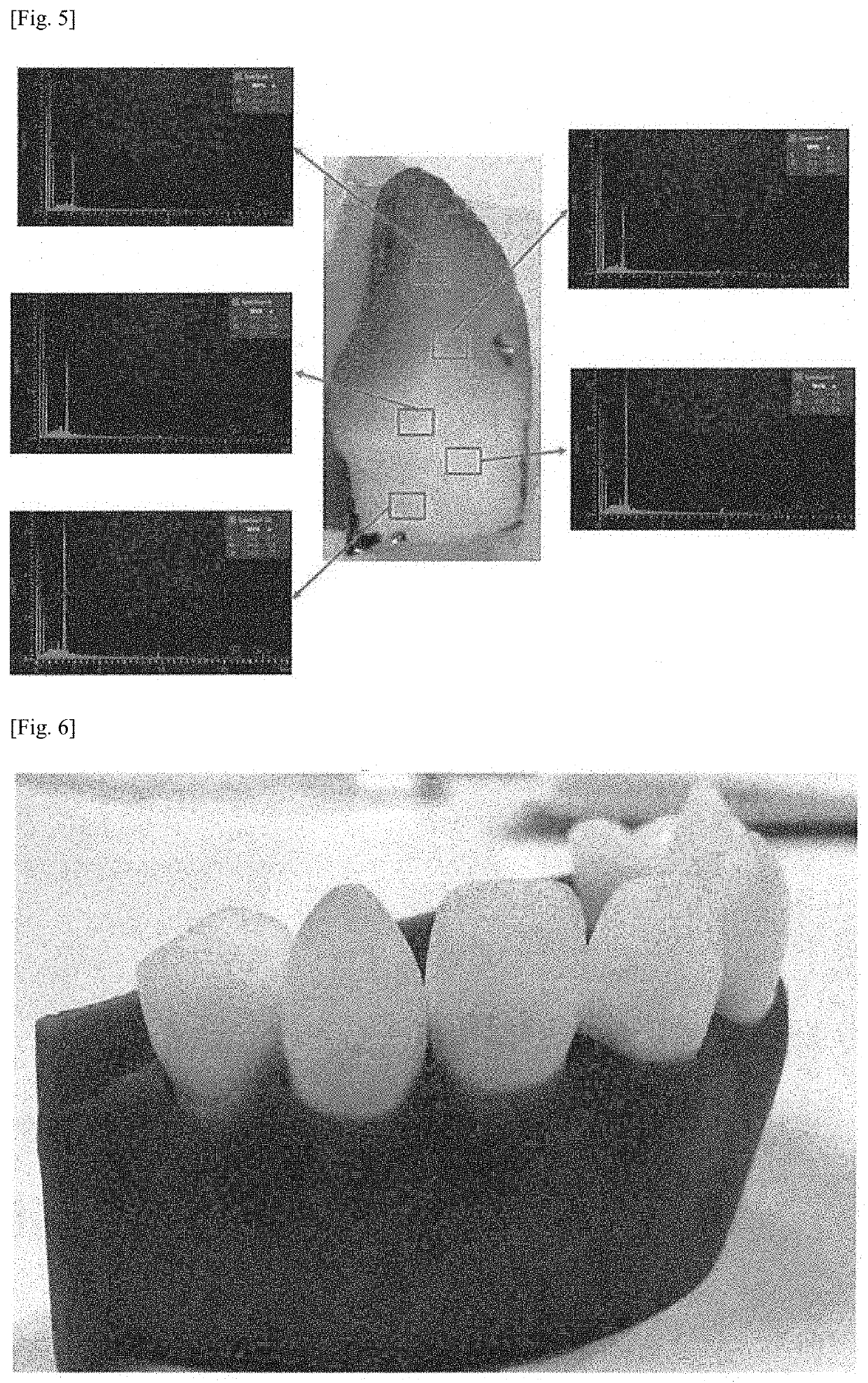A three-dimensional printing method
- Summary
- Abstract
- Description
- Claims
- Application Information
AI Technical Summary
Benefits of technology
Problems solved by technology
Method used
Image
Examples
example 1
Resin Formulation
[0069]The base resin and the particles (all chemicals from Aldrich Sigma of St. Louis of Missouri of the United States of America) (Table 1) were weighed into a flask and ultrasonicated in an ultrasonic bath for at least 2 hours. Then the photoinitiators and photstabilizer were added into the mixture and stirred in the absence of light for 8 to 24 hrs until a homogeneous suspension was obtained.
TABLE 1formulation of resin 1IngredientPercentages (wt %)Bisphenol A ethoxylate diacrylate (average35Mn ~468)Di(ethylene glycol) dimethacrylate (Aldrich)60zinc oxide (particles sizes 4.4Phenylbis(2,4,6-trimethylbenzoyl)phosphine0.5oxide4-methoxyphenol0.1
Printing of the Structures with Gradient Optical Properties Change
[0070]To demonstrate the possibility of gradient color printing, a rectangle plate was printed on a DLP printer (LittleRP with build volume 60 mm (X) 40 mm (Y) 100 mm (Z), which uses dynamic light processing projector with a resolution of 1024×768 (Brand & model...
example 2
Resin Formulation
[0071]The base resin and the particles (Table 2) were weighed into a flask and ultrasonicated in an ultrasonic bath for at least 2 hours. Then the photoinitiators and photstabilizer were added into the mixture and stirred in the absence of light for 8 to 24 hrs until a homogeneous suspension was obtained.
TABLE 2formulation of resin 2IngredientPercentages (wt %)Bisphenol A ethoxylate diacrylate (average23Mn ~468)Di(ethylene glycol) dimethacrylate70Zirconium dioxide (325 mesh)6.4Phenylbis(2,4,6-trimethylbenzoyl)phosphine0.5oxide4-methoxyphenol0.1
Printing of the Structures with Gradient Optical Properties Change
[0072]To demonstrate the possibility of gradient color printing, a rectangle plate was printed on a DLP printer (LittleRP with build volume 60 mm (X) 40 mm (Y) 100 mm (Z), which uses dynamic light processing projector with a resolution of 1024×768 (Brand & model: Acer P128) as light source and Creation Workshop as controlling software.) Printing was carried out ...
example 3
inting and Characterization
Resin Formulation
[0073]The base resin and the particles (Table 3) were weighed into a flask and ultrasonicated in an ultrasonic bath for at least 2 hours. Then the photoinitiators and photstabilizer were added into the mixture and stirred in the absence of light for 8 to 24 hrs until a homogeneous suspension was obtained.
TABLE 3formulation of resin 3IngredientPercentages (wt %)Bisphenol A ethoxylate diacrylate (average31Mn ~468)Di(ethylene glycol) dimethacrylate60Zirconium dioxide (325 mesh)8.4Phenylbis(2,4,6-0.5trimethylbenzoyl)phosphine oxide2,5-Bis(5-tert-butyl-benzoxazol-2-0.1yl)thiophene
Printing of the Structures with Gradient Optical Properties Change
[0074]To demonstrate the possibility the artificial tooth with gradient color change, the tooth structure was printed on a DLP printer (LittleRP with build volume 60 mm (X) 40 mm (Y) 100 mm (Z), which uses dynamic light processing projector with a resolution of 1024×768 (Brand & model: Acer P128) as ligh...
PUM
| Property | Measurement | Unit |
|---|---|---|
| Density | aaaaa | aaaaa |
| Particle size | aaaaa | aaaaa |
| Particle size | aaaaa | aaaaa |
Abstract
Description
Claims
Application Information
 Login to View More
Login to View More - R&D
- Intellectual Property
- Life Sciences
- Materials
- Tech Scout
- Unparalleled Data Quality
- Higher Quality Content
- 60% Fewer Hallucinations
Browse by: Latest US Patents, China's latest patents, Technical Efficacy Thesaurus, Application Domain, Technology Topic, Popular Technical Reports.
© 2025 PatSnap. All rights reserved.Legal|Privacy policy|Modern Slavery Act Transparency Statement|Sitemap|About US| Contact US: help@patsnap.com



